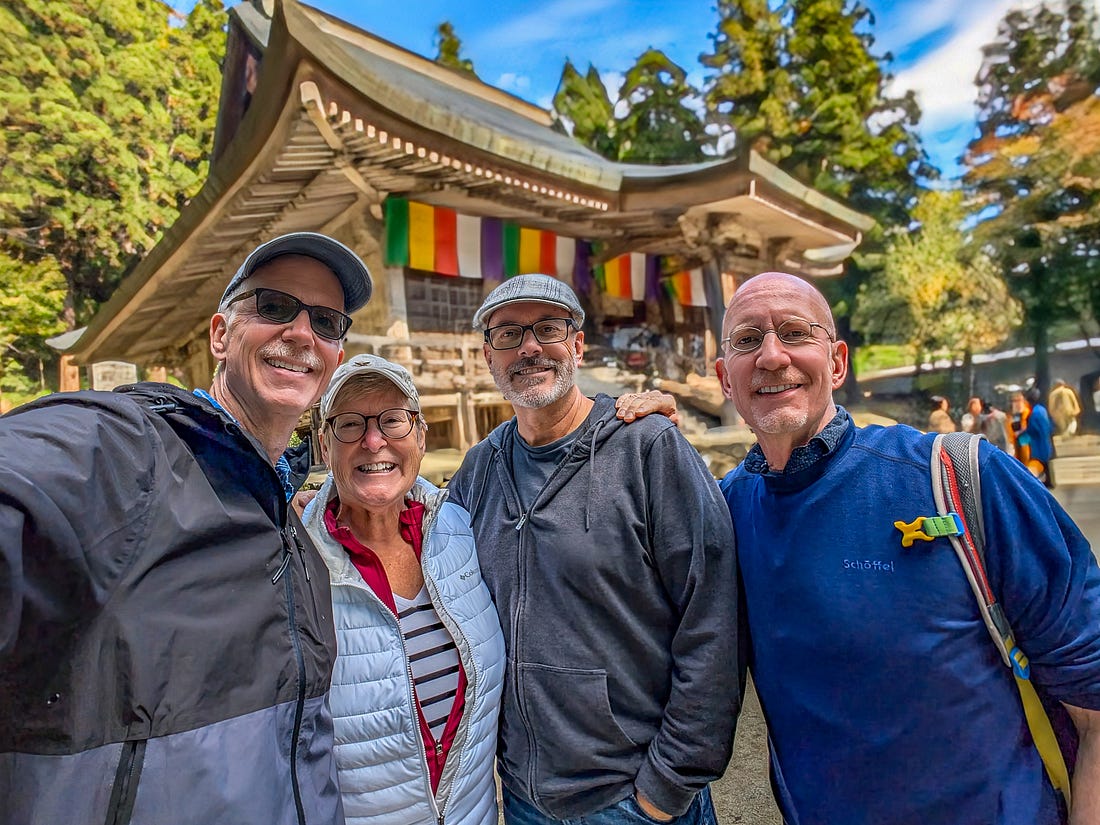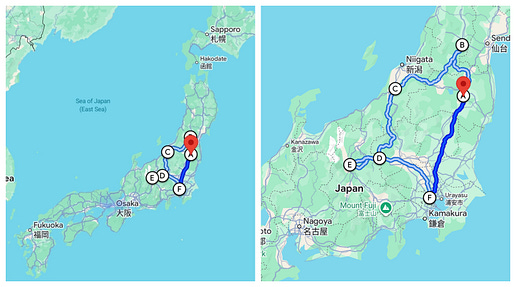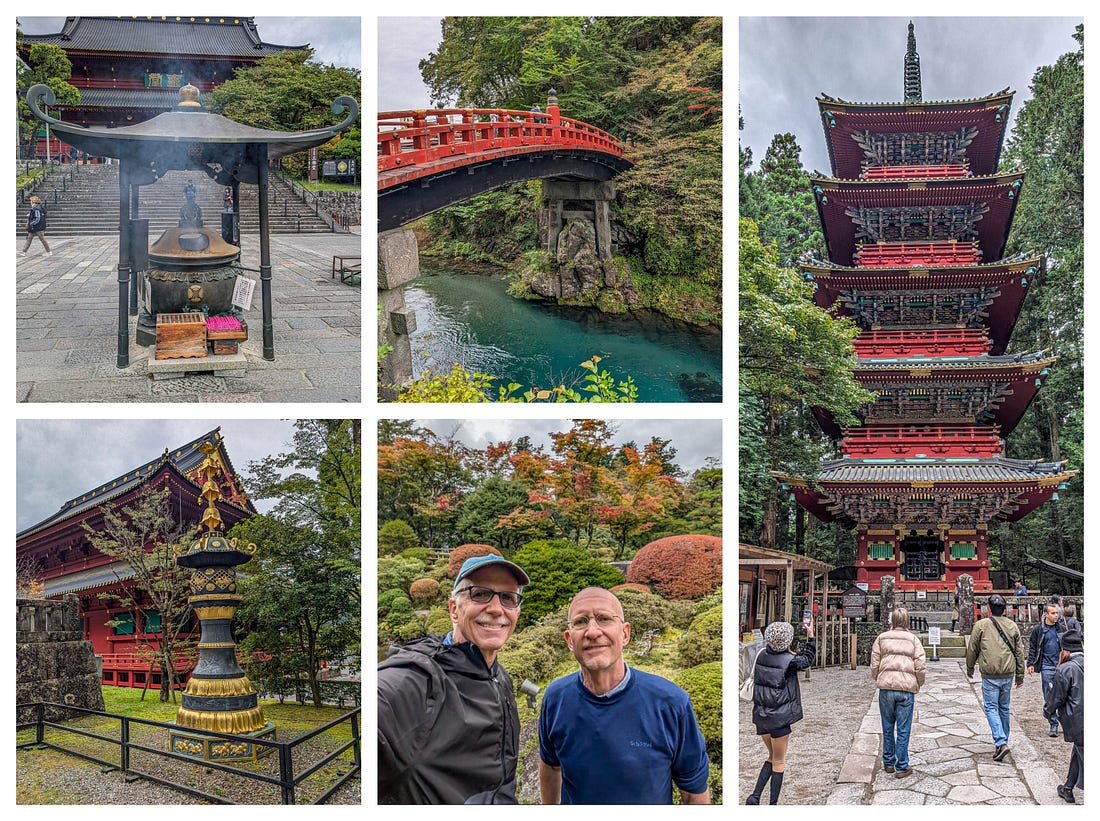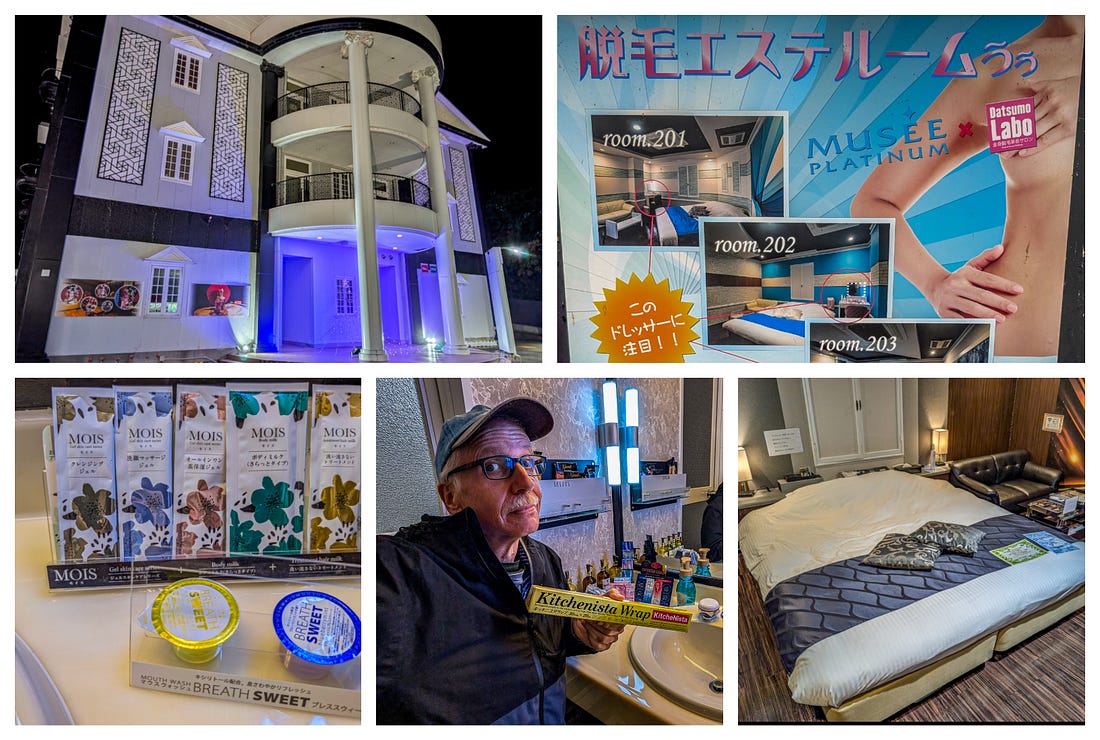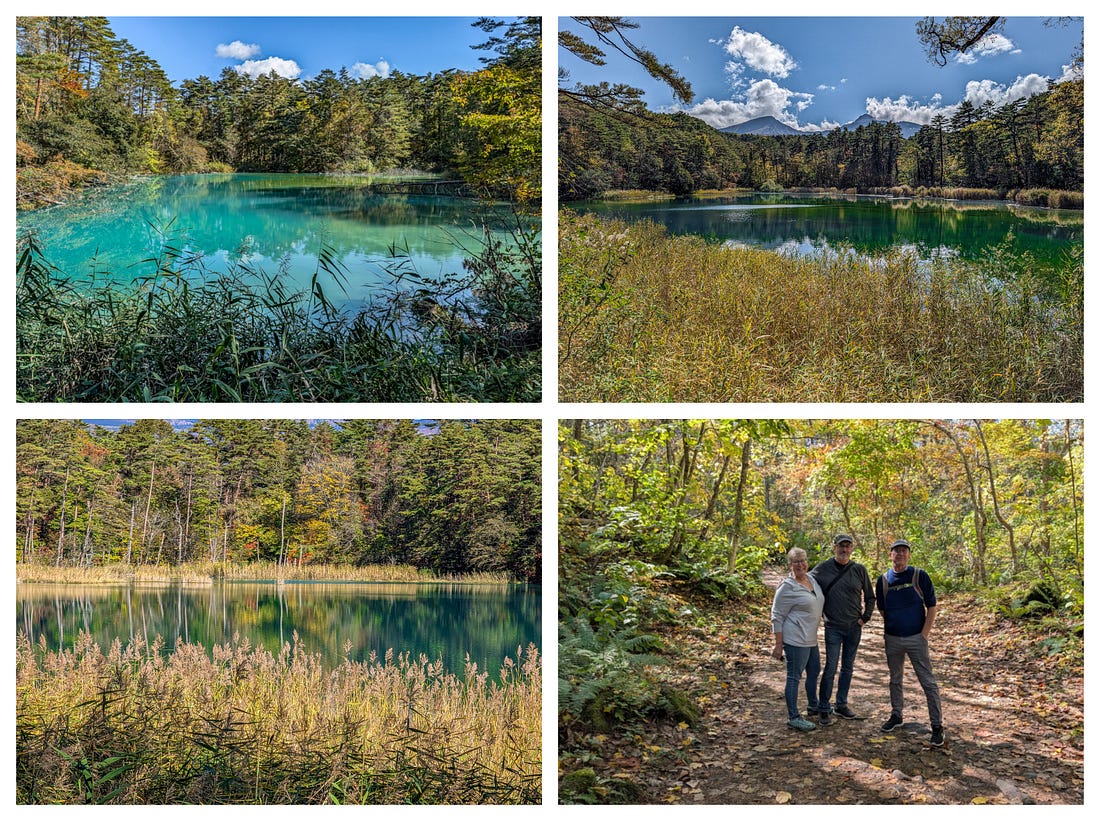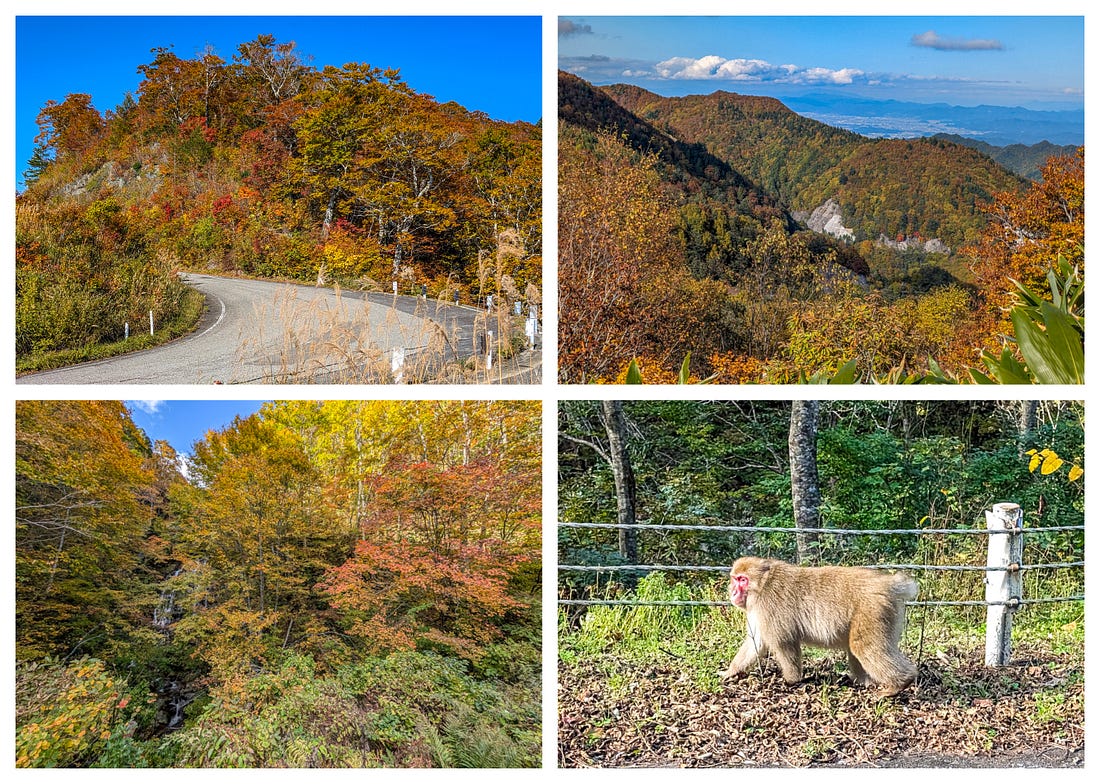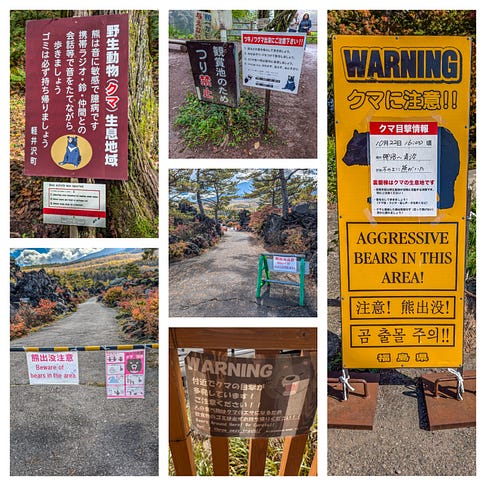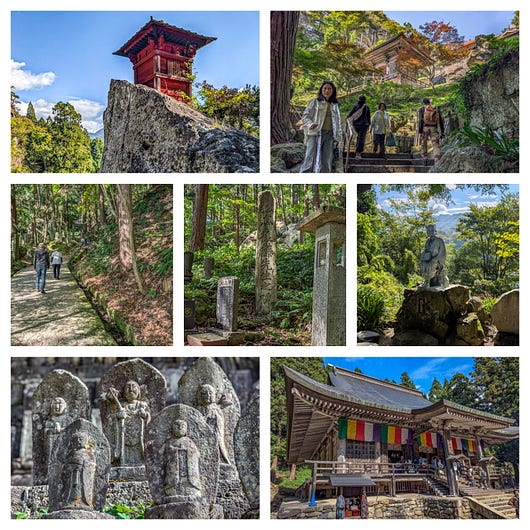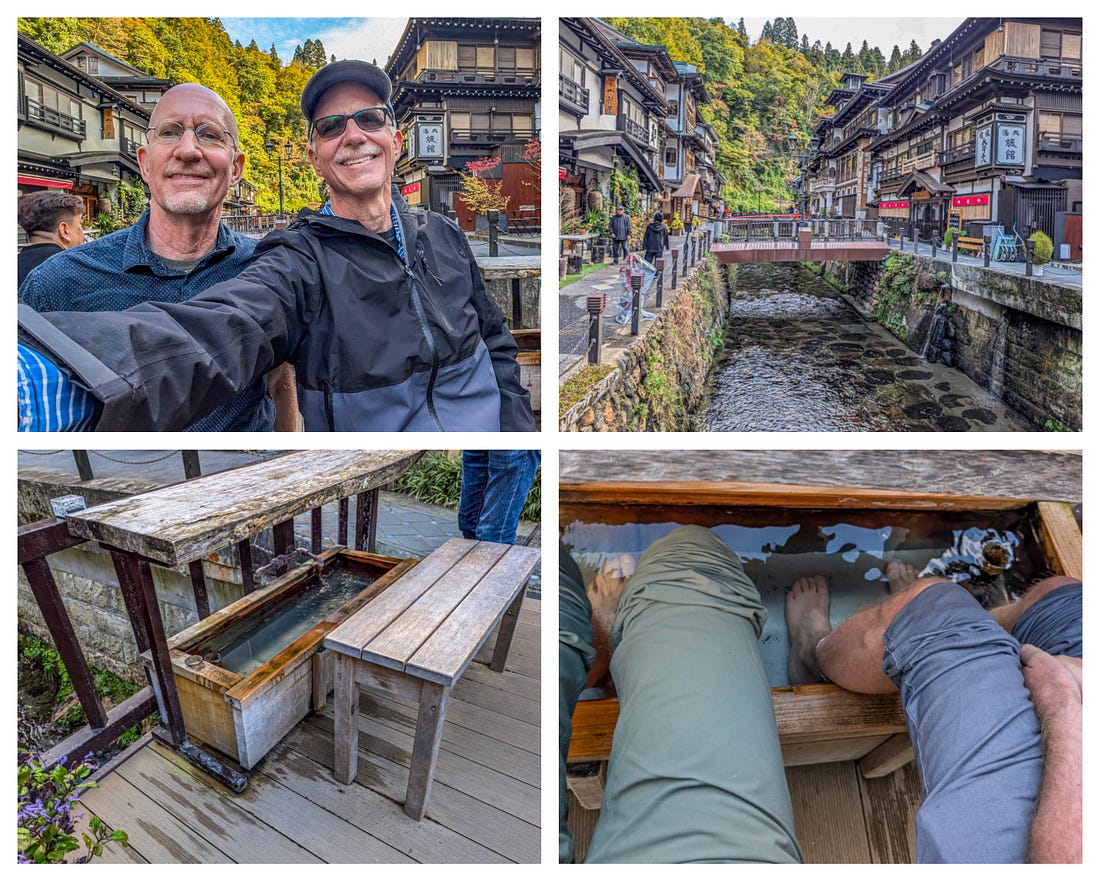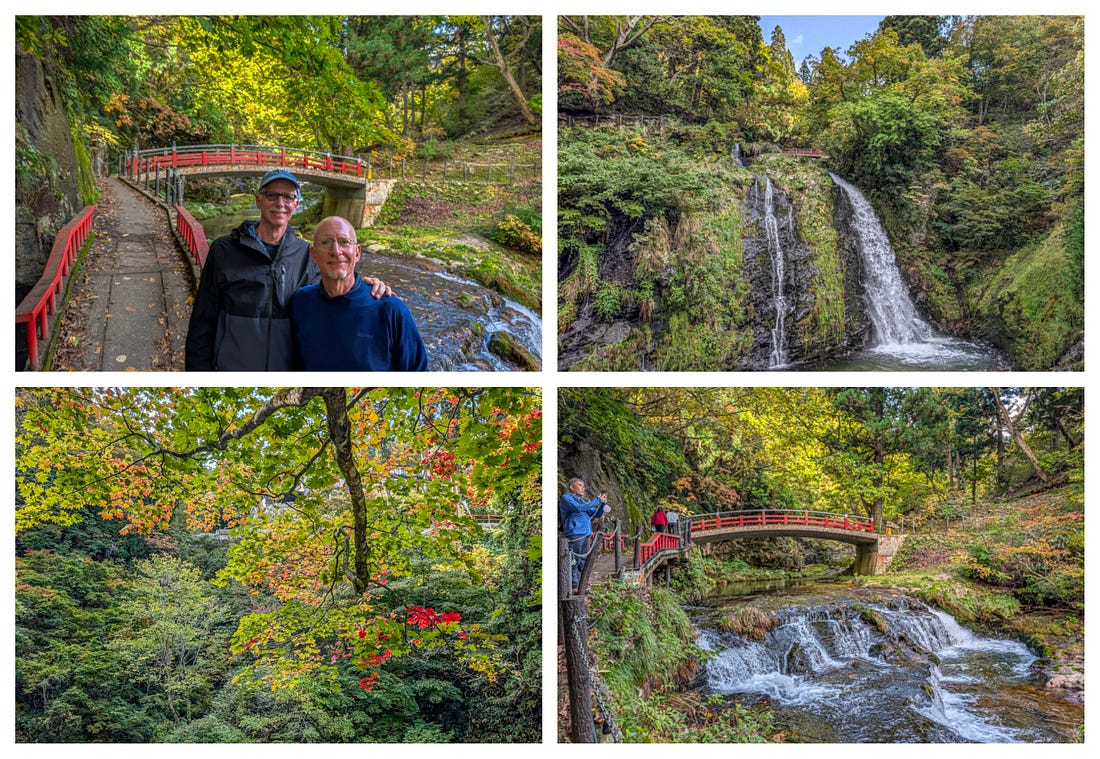Our Road Trip in Japan: Searching for Autumn Colors in the Mountains of Honshu
- Brent and Michael Are Going Places <brentandmichaelaregoingplaces@substack.com>
- Hidden Recipient <hidden@emailshot.io>
Our Road Trip in Japan: Searching for Autumn Colors in the Mountains of HonshuAfter a blistering-hot and very urban Asian summer, we were desperate for cooler temperatures and nature's wonder. Did we find it?Less than a month after we spent nine days touring Southern China, Brent and I just did a nine-day road trip through the mountains of central Japan. But this time, we went with two fellow nomads, Howard and Whitney Darby, a couple we connected with in Serbia three years ago. Better still, Howard organized most of the trip, renting the van, plotting the route, choosing our hotels, and selecting most of the sights along the way. He even did all the driving. Who would ever pass up a deal like that? The total cost, including car rental and insurance, gas, hotels, food, and admission to various attractions? About $1,913 USD per couple — or $212 per couple per day. Our trip started and ended in Tokyo. The route we chose kept us in the central part of Honshu, Japan’s main island, in hopes that Japan’s famous fall foliage would be on full display. Brent and I had just spent the summer in urban areas in South Korea, Taiwan, and Hong Kong, so while we were looking forward to the fall colors, we were also simply craving nature. And COOL TEMPERATURES. This year, the Asian summer heat has been unbearable. The trip involved a fair bit of driving — nearly 1,600 km/1,000 miles — but most days we kept it to no more than four hours on the road. Most of our accommodations were fair-to-good but unremarkable, with the notable exception of our first night, which was in one of Japan’s famous “love hotels.” We also splurged on three nights together in a nice Airbnb to give us a break from all the driving. We knew ahead of time that Japan’s blistering-hot summer had delayed the timing of the trees’ color change. This left us uncertain exactly how much color we would see. To paraphrase that old song from Pocahontas, did we end up painting with all the colors of the wind? Read on to find out! (Each day will be given a “Colors of the Wind” rating from 🍂🌿🌿🌿🌿 to 🍂🍂🍂🍂🍂 — one autumn leaf to five — to rank how spectacular the leaves were.) DAY ONE: Nikkō Tōshogū and the “Love Hotel.”On our first day, we saw Nikkō Tōshogū, one of Japan’s most famous and important shrines — even if I didn’t realize how famous it was until later, when I was writing this article. This is a Shinto shrine built in 1617, and unlike most Japanese shrines, which tend toward a minimalist design, this temple is filled with gold leaf, bright colors, and elaborate carvings. It’s widely considered to be one of the architectural peaks of the Edo Period, Japan’s feudal era. Nikkō Tōshogū was built to honor Tokugawa Ieyasu, the founder of the Tokugawa Shogunate. (A shogunate is a governmental system in ancient Japan run by and for the samurai; eventually, the shogun, or head of the shogunate, became more powerful than the emperor.) As spectacular as the temple was, the real highlight of the day may have been our lodging: Belfus Hotel in Koriyama — a “love hotel,” which is where many Japanese go for famously “discreet” sexual liaisons. But unlike in America, these often short-term hotels are not sleazy. We booked the Belfus through Booking.com, and Howard had a sneaking suspicion it was a love hotel — in part, because the price was so good. Then we arrived and saw the hourly rates and the highly discreet check-in process, and we knew for sure. There was also a wide variety of products available to “enhance” your visit — including, yes, a roll of plastic wrap in our room. Ironically, the room was possibly the cleanest we’ve ever stayed in. The thoroughness of their cleaning was a point they emphasized — for, er, obvious reasons. Naturally, we’ll be writing more on this in a future article. We did see a bit of color in the trees around the shrine, but the Colors of the Wind Rating for the day was still only: 🍂🍂🌿🌿🌿 [Two Autumn Leaves] DAY TWO: The bluest ponds you’ve ever seen, the valley in the sky, and bears, bears, bears!After a night of rest at the love hotel — no, seriously! — we set off for our next destination: Goshikinuma Ponds, located inside the Bandai-Asahi National Park. The ponds are popular with hikers who come to see their various shades of blue, ranging from cobalt to turquoise to lapis lazuli. The ponds, formed by the 1888 eruption of nearby Mount Bandai, get their color from minerals released by that eruption. While the ponds were very blue and helped scratch our itch for nature, the trees were mostly still all green, which was disappointing. Our next destination — the Nishi Azuma Sky Valley — seemed more promising. This 18-kilometer scenic drive through the Tohoku region of Japan is famous for its fall colors. But had we arrived too early? The colors were good, not great. And we saw very few Japanese maples, which are known for their vivid red color. But we did see several of Japan’s famous “snow monkeys,” often right along the road. The most memorable thing about our second day was something completely unexpected: signs everywhere about the danger posed by Japan’s black bears. Unbeknownst to us, Japan was suffering a record number of bear attacks, with six people having already been killed. By the time our trip was over, three more people would have died. Authorities believe that two main factors are causing the rise in bear attacks in Japan:
Needless to say, all the warning signs made us very wary every time we entered the woods. Colors of the Wind Rating: 🍂🍂🍂🌿🌿 [Three Autumn Leaves] DAY THREE: Shed your worldly concerns and then soak your feet!Day three took us to our second temple of the trip. Since Howard had done so much of the planning — thanks again, Howard! — I knew much less about each destination than when I plan a trip. That meant I had few expectations, which was a refreshing change. Risshaku-ji Temple, commonly known as Yamadera, is a Buddhist temple founded in AD 860. Nestled on the steep, rocky mountainside of Mount Hōju, the temple is famous for the 1,015 steps visitors climb to reach the various shrines and temples perched at the top. The climb to the top is said to free visitors of their worldly desires. The walk up through the forest was lovely and green — precisely what we needed after Hong Kong. Unfortunately, these leaves hadn’t changed much either, and the 1,015 steps did little to alleviate my worldly desire to see more color. Our next stop was Ginzan Onsen — Silver Mountain Hot Spring — a town famous for its “onsens,” which is the Japanese word for “hot springs and the facilities surrounding them.” Onsens are found both outdoors, in their natural states, and in indoor pools filled with water from the hot springs. Ginzan Onsen is also known for its wooden inns along the river and its gorgeous winter scenery. We were charmed by the wooden boxes found around town, where visitors could soak their feet in water from the hot springs. We also took a hike along the stream, and it included several traditional Japanese bridges, some lovely waterfalls, and also access to some of the town’s original silver mines, which you can explore on boardwalks. But while the hike was spectacular, the leaves were mostly once again pretty green. Colors of the Wind Rating: 🍂🍂🌿🌿🌿 [Two Autumn Leaves] DAY FOUR: Let’s get drunk on sake! (Or maybe just taste some.)Day four was a longer drive, the point of which was to get to Karuizawa, our next destination, as quickly as possible. We did have to spend the night in Niigata, a rather nondescript port town on the Sea of Japan. Niigata does have one genuine claim to fame: it’s widely considered to be the sake capital of the world. Creating this newsletter takes a lot of time and effort, so half of our posts are for paid-subscribers only, including this article. But here is a special offer to get an annual subscription — giving you access to the rest of this article and also everything else we’ve written — at 40% off, $30 USD/year (or $2.50/ month) for as long as you continue subscribing:
Using the above affiliate links will cost you nothing and help support our newsletter. You can also support us with a one-time donation of any amount here: |
Similar newsletters
There are other similar shared emails that you might be interested in:

